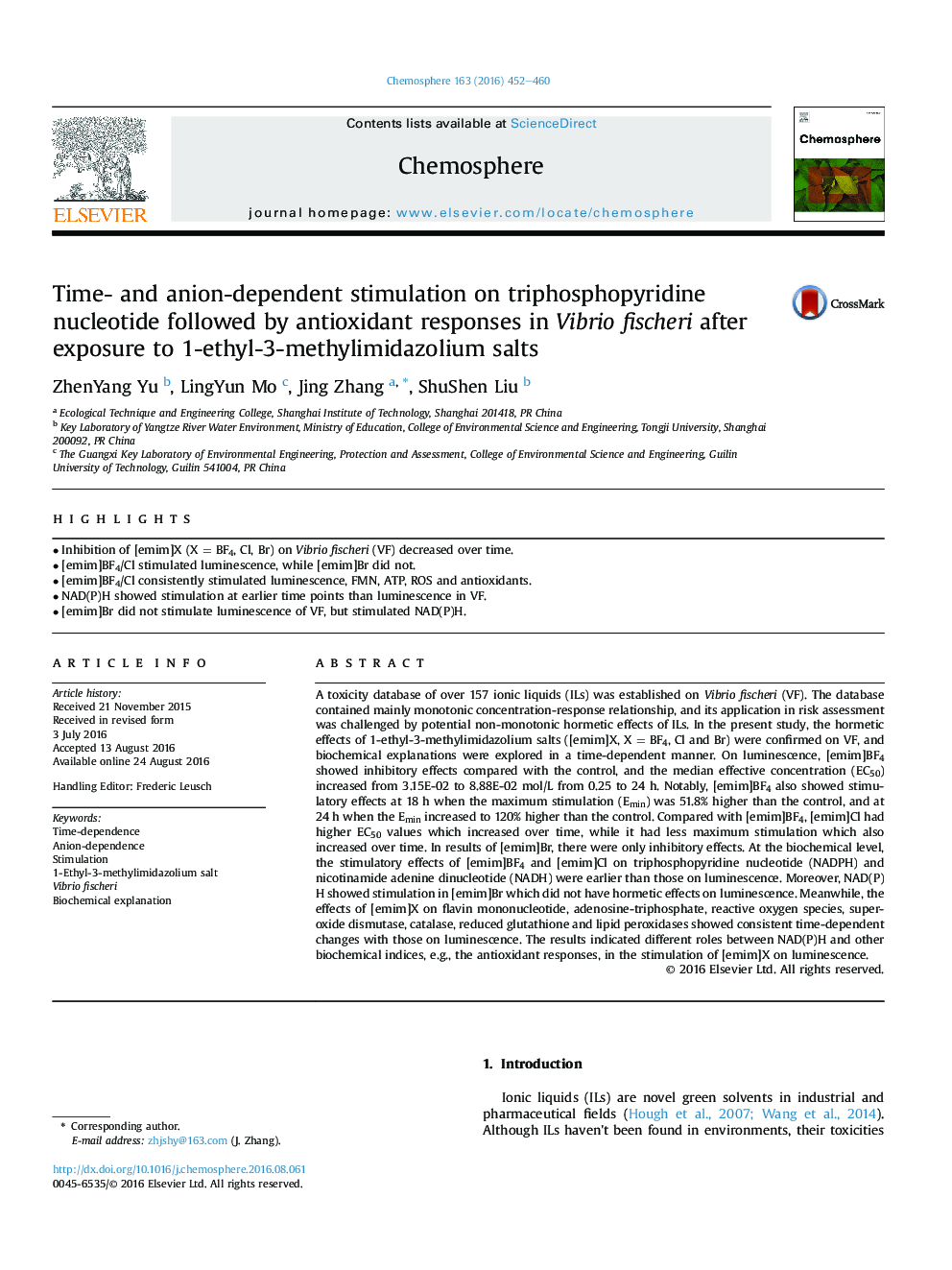| Article ID | Journal | Published Year | Pages | File Type |
|---|---|---|---|---|
| 6306305 | Chemosphere | 2016 | 9 Pages |
Abstract
A toxicity database of over 157 ionic liquids (ILs) was established on Vibrio fischeri (VF). The database contained mainly monotonic concentration-response relationship, and its application in risk assessment was challenged by potential non-monotonic hormetic effects of ILs. In the present study, the hormetic effects of 1-ethyl-3-methylimidazolium salts ([emim]X, XÂ =Â BF4, Cl and Br) were confirmed on VF, and biochemical explanations were explored in a time-dependent manner. On luminescence, [emim]BF4 showed inhibitory effects compared with the control, and the median effective concentration (EC50) increased from 3.15E-02 to 8.88E-02Â mol/L from 0.25 to 24Â h. Notably, [emim]BF4 also showed stimulatory effects at 18Â h when the maximum stimulation (Emin) was 51.8% higher than the control, and at 24Â h when the Emin increased to 120% higher than the control. Compared with [emim]BF4, [emim]Cl had higher EC50 values which increased over time, while it had less maximum stimulation which also increased over time. In results of [emim]Br, there were only inhibitory effects. At the biochemical level, the stimulatory effects of [emim]BF4 and [emim]Cl on triphosphopyridine nucleotide (NADPH) and nicotinamide adenine dinucleotide (NADH) were earlier than those on luminescence. Moreover, NAD(P)H showed stimulation in [emim]Br which did not have hormetic effects on luminescence. Meanwhile, the effects of [emim]X on flavin mononucleotide, adenosine-triphosphate, reactive oxygen species, superoxide dismutase, catalase, reduced glutathione and lipid peroxidases showed consistent time-dependent changes with those on luminescence. The results indicated different roles between NAD(P)H and other biochemical indices, e.g., the antioxidant responses, in the stimulation of [emim]X on luminescence.
Related Topics
Life Sciences
Environmental Science
Environmental Chemistry
Authors
ZhenYang Yu, LingYun Mo, Jing Zhang, ShuShen Liu,
